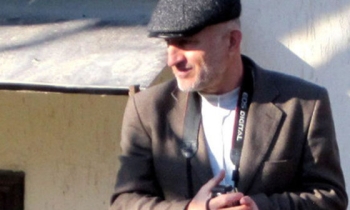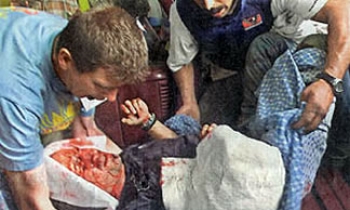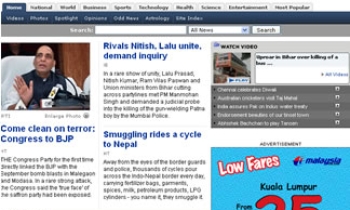Oh what a year for plagiarists. Herewith, a quick collection of the year’s instances of plagiarism in the media. We’ve tried to catch them all, but can’t promise that this is a definitive list. Please email us if you know of one we’ve missed. (Then we’ll take your information and use it as our own without attribution.)
- In January Siddharth Srivastava, an India-based freelancer for the International Herald Tribune and San Francisco Chronicle, plagiarized material from an article in The Guardian. The resulting story appeared in both the IHT and Chronicle, but only the Chronicle published a note about the plagiarism.
- In February Ken Powers, a sports writer from the Telegram & Gazette of Worcester, Massachusetts, was "sent home" from covering the Super Bowl after he plagiarized some of his column from an article in Sports Illustrated.
- In March The Telegram, the daily newspaper in St. John's, Newfoundland, reported it found "at least" seven articles that contained plagiarized material. But it didn't list the articles, describe the plagiarized information, or note where the information was lifted from. It also didn’t name the reporter that committed the offenses.
- In April the LA Times ran a lengthy Editor's Note that outlined the inaccuracies, "substandard" reporting methods, and unverifiable quotes in two stories by reporter Eric Slater. The paper fired him.
- In April the Boston Globe had to retract a story and sever its relationship with the freelancer who penned it. The writer, Barbara Stewart, a former New York Times reporter now based in Halifax, Nova Scotia, wrote a story about the Canadian seal hunt as if she had been there on the ice floes the day it began. "The story datelined Halifax, Nova Scotia, described in graphic detail how the seal hunt began Tuesday, with water turning red as hunters on some 300 boats shot harp seal cubs 'by the hundreds'," noted one Reuters piece. The problem was that the hunt was delayed and the story ran anyway -- thus revealing the fabrications. (It was the Canadian government that brought it to the paper's attention.)
- In May Wired News published the results of an investigation into the work of freelancer Michelle Delio. The investigation, led by Adam Penenberg, reviewed 160 of her more than 700 articles written for Wired News. It did not find outright fabrications of stories, but did result in 24 notes being inserted in stories to inform readers which sources could not be confirmed. Delio rejects any accusations that there are problems with her work.
- In June the Florida Sun-Sentinel found "several articles in which material was used without attribution and quotes were improperly attributed." As a result, it terminated its relationship with Nazish Ahmad, a freelancer who had previously served as an intern at the newspaper.
- In July two young reporters and the managing editor resigned from the Reidsville Review after it was revealed that the reporters fabricated quotes for a regular feature in the newspaper. The managing editor "verbally disciplined" the reporters when he first learned of the fabrications. Then other media outlets picked up the story and he was forced to resign. The reporters had made up quotes for people featured in the "Two Cents Worth Feature," where local people were asked to give their opinion on a question posed each day. In some cases, the reporters, Brook Corwin and Michael Pucci, used pictures of their former classmates and made up quotes for them.
- In July a columnist and member of the editorial board at the Montreal Gazette was reprimanded and had her column put on hiatus after she plagiarized from a columnist at the New York Times. Janet Bagnall said she had mistaken Nicholas Kristof’s writing for her own while compiling her research for a column. She then included it in her column verbatim. A New York Times reporter would offer this exact same excuse just a few months later.
- In August Thom Beal, deputy editorial page editor of The Rocky Mountain News, resigned after an editorial he penned contained striking similarities to a Washington Post story.
- In August the Richmond Times-Dispatch fired a photographer after he committed "visual plagiarism." The photographer copied a photo from Style Weekly magazine and submitted it to the paper as original work. . The images (click for larger view):Visualplag
- In August the Milwaukee Journal Sentinel published an opinion article supposedly written by a former mayor. After its publication, it was revealed that the mayor didn’t write it and the paper was unable to confirm who had. Not exactly plagiarism, but not exactly normal either.
- In October the San Francisco Chronicle admitted that an article about suicides on the Golden Gate Bridge had plagiarized from an article in the New Yorker. The paper did not name the reporter who plagiarized and did not offer any details how the incident occurred or what disciplinary action the writer would face.
- In November it was revealed that the Californian newspaper in Bakersfield, CA had found instances of plagiarism and/or fabrication in at least 29 stories written by reporter Nada Behziz, who strongly disputes all accusations. A former employer of hers, the Daily Republic, also reported finding problems in two stories after an initial investigation. If proved, this would be the worst case of plagiarism since Jayson Blair.
- In November a Syria-based freelancer working for the Cox News Service plagiarized from a story in the St. Petersburg Times to create quotes for invented sources. The freelancer, George Baghdadi, says his assistant, Hussein Ali was responsible for the plagiarized/fabricated quotes. Cox was unable to contact Ali to confirm the details. The story ran in many US newspapers.
- In December New York Times reporter Steve Erlanger "inadvertently" plagiarized two paragraphs of an article from Travel + Leisure magazine. Echoing the reasoning offered by a Montreal Gazettte columnist months earlier, he said that the material was in his notes and he mistakenly included it as his own work.
For the full posts and the entire list click here.









